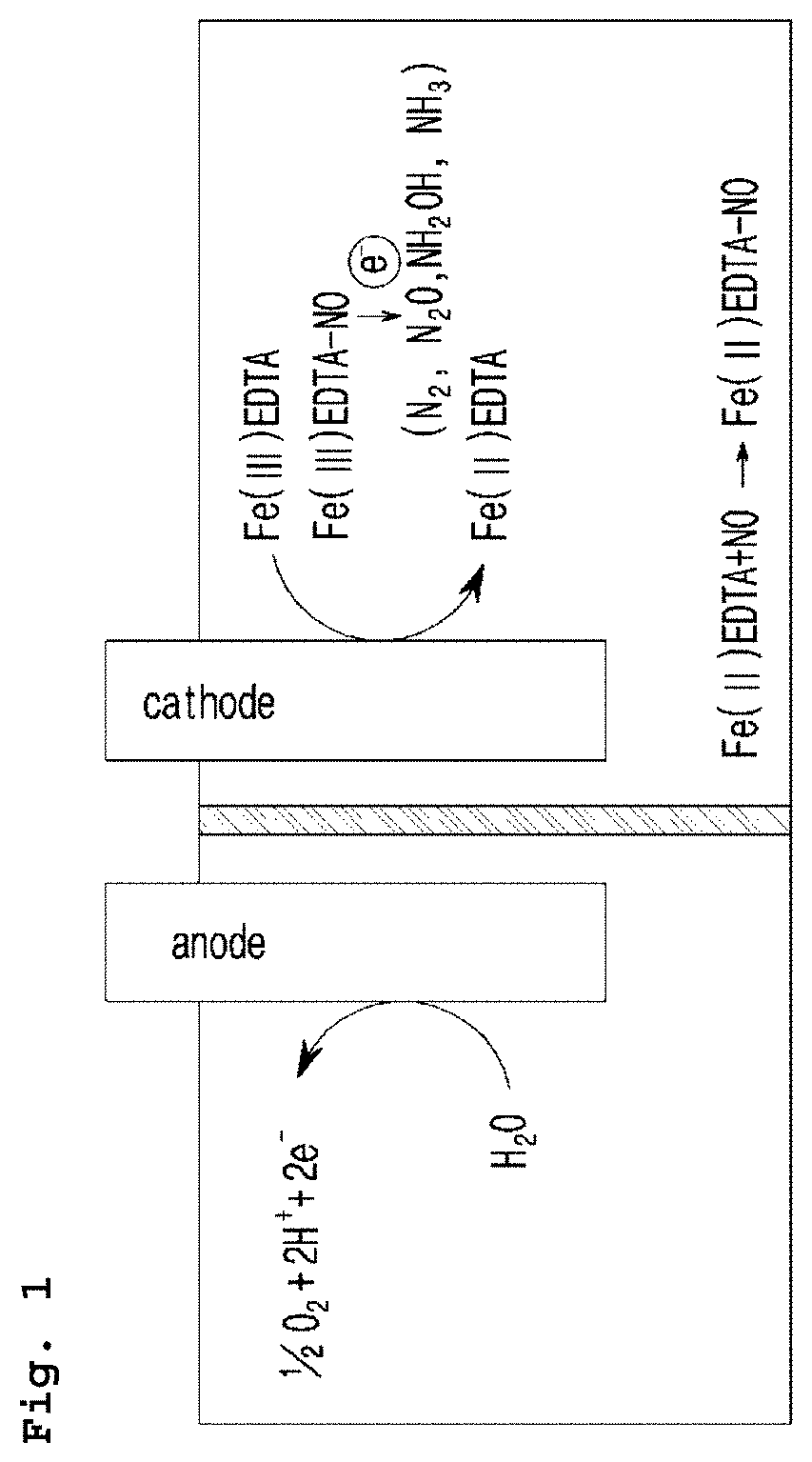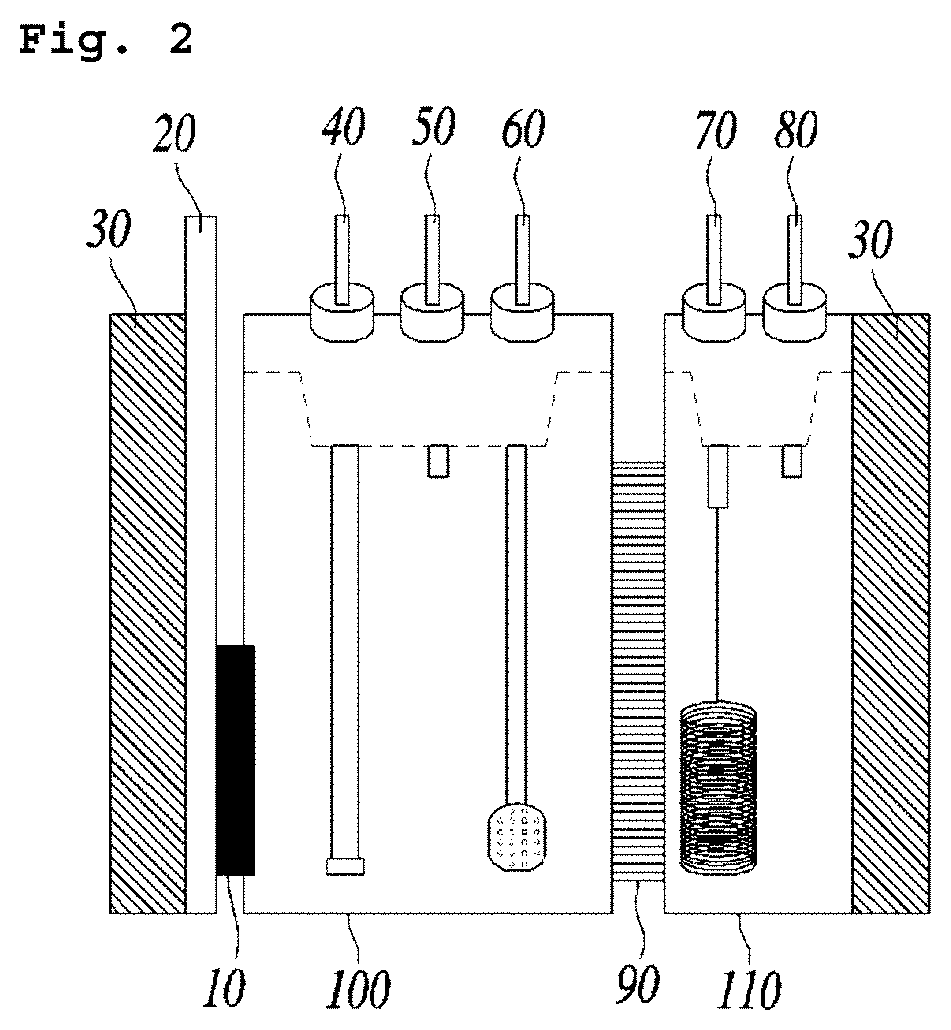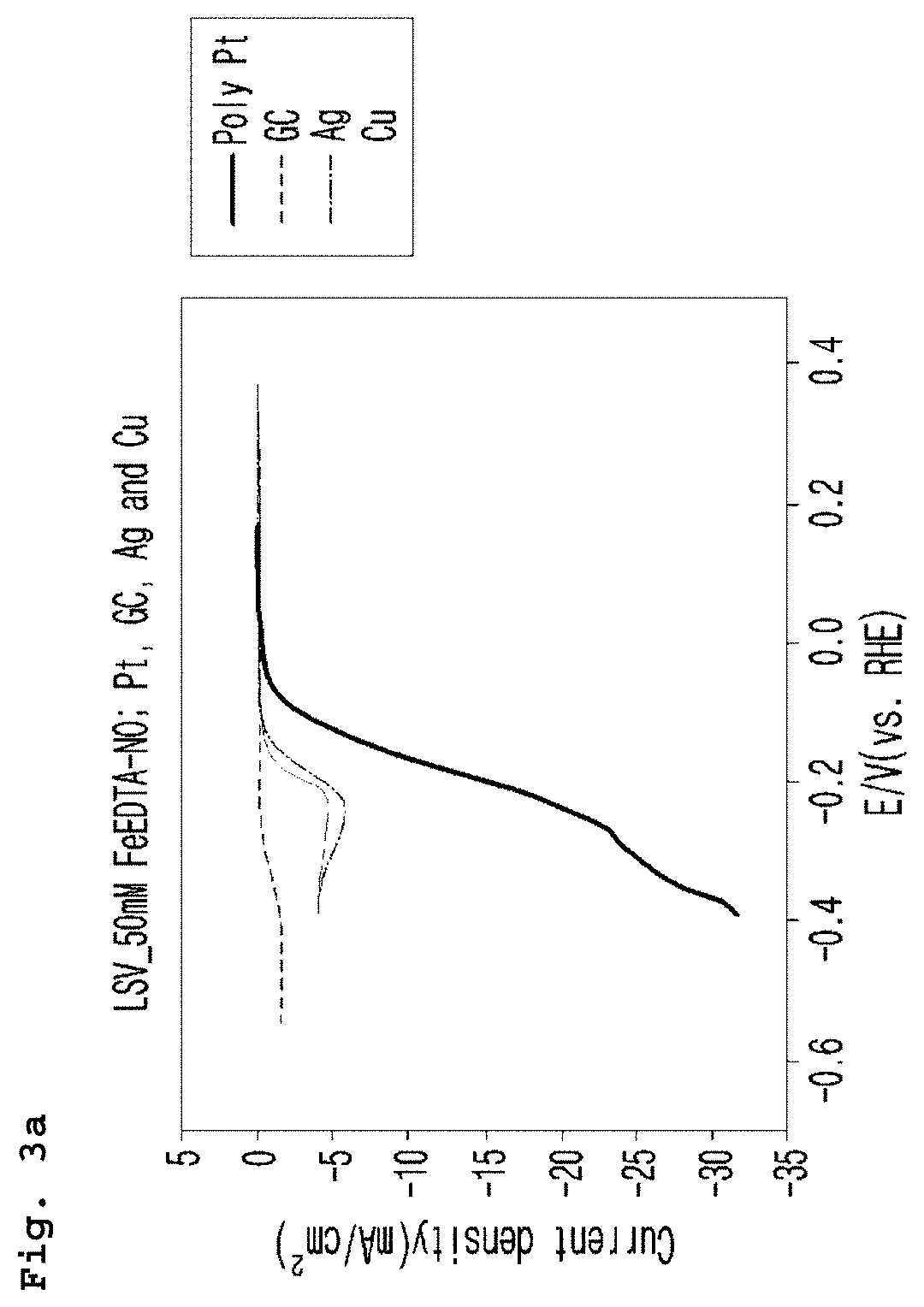Electrochemical system for producing ammonia from nitrogen oxides and preparation method thereof
a technology of ammonia and nitrogen oxides, which is applied in the direction of electrode coating, electrolysis components, separation processes, etc., can solve the problems of fine dust (particulate matter), photochemical smog, and environmental problems, and achieve low temperature selectivity, high selectivity, and high efficiency in producing high-value-added materials
- Summary
- Abstract
- Description
- Claims
- Application Information
AI Technical Summary
Benefits of technology
Problems solved by technology
Method used
Image
Examples
experimental example 1
ed Voltage Range for Each Cathode Electrode (Working Electrode)
[0062]In the electrochemical system having the structure shown in FIG. 2, phosphate buffer was used as an electrolyte which comprises Fe(II)EDTA at the concentration of 50 mM. A mixed gas comprising argon gas (99%) and nitrogen monoxide (1%) was injected through the gas inlet for supplying nitrogen oxides at the flow rate of 20 mL / min. A platinum foil was used as an anode electrode (counter electrode), and a silver / silver chloride reference electrode was used as a reference electrode.
[0063]As for the cathode electrode (working electrode), platinum (Pt), glassy carbon (GC), silver (Ag) and copper (Cu) were used. Linear Sweep Voltammetry was performed under the conditions above and the results are shown in FIG. 3a and FIG. 3b. Potential difference was precisely corrected by IR compensation and then the modified potential difference was converted by the reference hydrogen electrode (RHE), which was presented on the X-axis.
[...
experimental example 2
t Efficiency of Product for Each Cathode Electrode (Working Electrode)
[0065]Chronoamperometry (CA) was performed with the same electrochemical system used in Experimental Example 1. Then, the current efficiency of the converted products was confirmed, and the results are shown in FIGS. 4a-4d. As in the case of linear sweep voltammetry, potential difference was precisely corrected by IR compensation and then the modified potential difference was converted by the reference hydrogen electrode (RHE), which was presented on the X-axis. The overvoltage condition for each cathode electrode was set as follows based on the results obtained from the linear sweep voltammetry performed in Experimental Example 1 (FIG. 2): −0.35V˜−0.55 V for the glassy carbon working electrode (cathode electrode), −0.55 V˜−0.35 V for the platinum electrode, and 0.15 V˜−0.35 V for the silver and copper working electrodes (cathode electrodes).
[0066]According to FIGS. 4a˜4d, when the glassy carbon working electrode ...
experimental example 3
sion Rate of Nitrogen Monoxide to Ammonia
[0069]Ammonia-partial current density was calculated from the data obtained by performing chronoamperometry (CA) using the same electrochemical system used in Experimental Example 1, and the results are shown in FIG. 5. In another words, the results shown in FIG. 5 indicate the conversion rate of nitrogen monoxide to ammonia. According to FIG. 5, when silver was used as the cathode electrode (working electrode), the conversion rate to ammonia was very fast. It was also confirmed that the overvoltage condition exceeding a certain level for each electrode was playing a role in inhibiting ammonia production mediated by such a side reaction as hydrogen production.
PUM
| Property | Measurement | Unit |
|---|---|---|
| electrochemical | aaaaa | aaaaa |
| pH | aaaaa | aaaaa |
| concentration | aaaaa | aaaaa |
Abstract
Description
Claims
Application Information
 Login to View More
Login to View More - R&D
- Intellectual Property
- Life Sciences
- Materials
- Tech Scout
- Unparalleled Data Quality
- Higher Quality Content
- 60% Fewer Hallucinations
Browse by: Latest US Patents, China's latest patents, Technical Efficacy Thesaurus, Application Domain, Technology Topic, Popular Technical Reports.
© 2025 PatSnap. All rights reserved.Legal|Privacy policy|Modern Slavery Act Transparency Statement|Sitemap|About US| Contact US: help@patsnap.com



